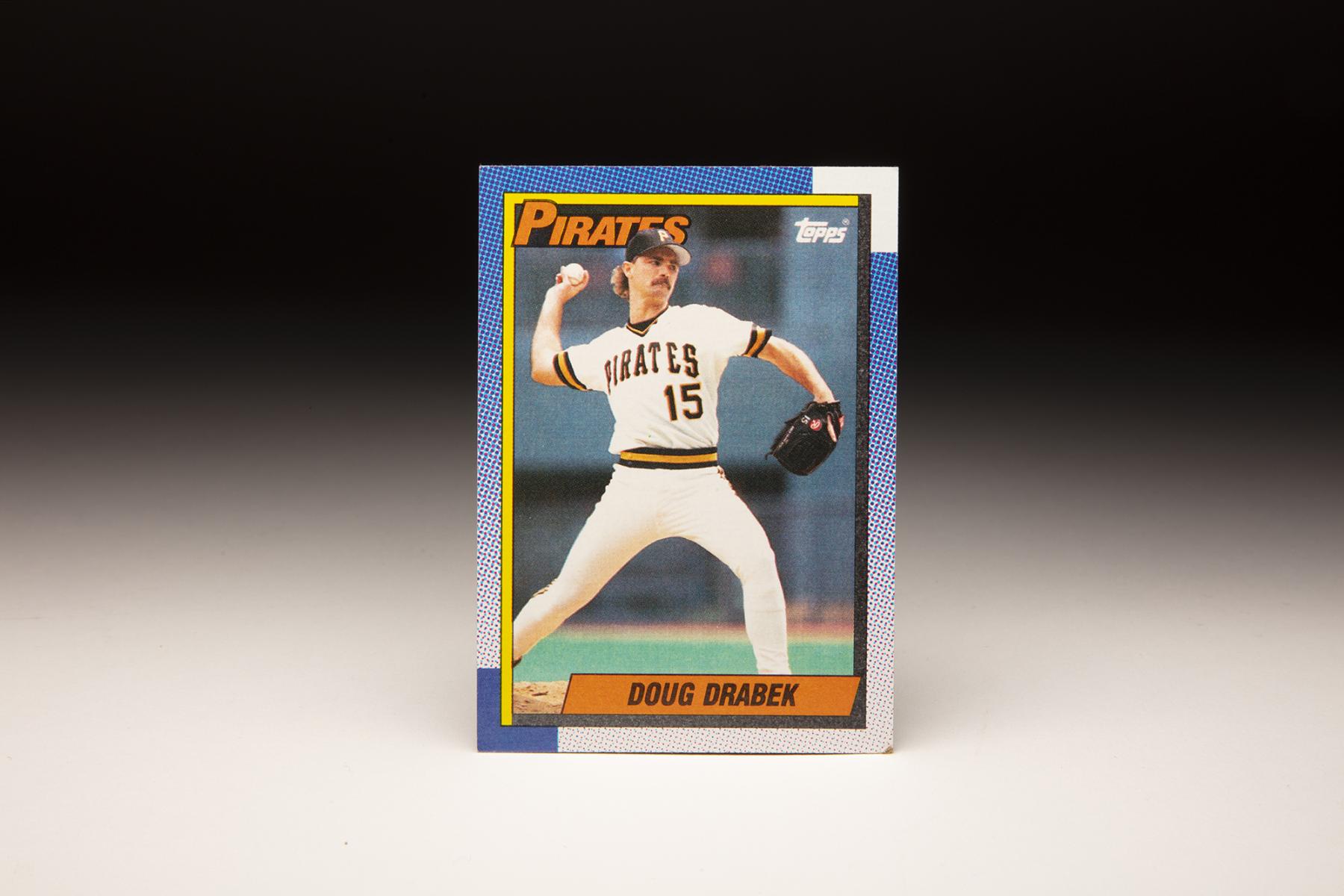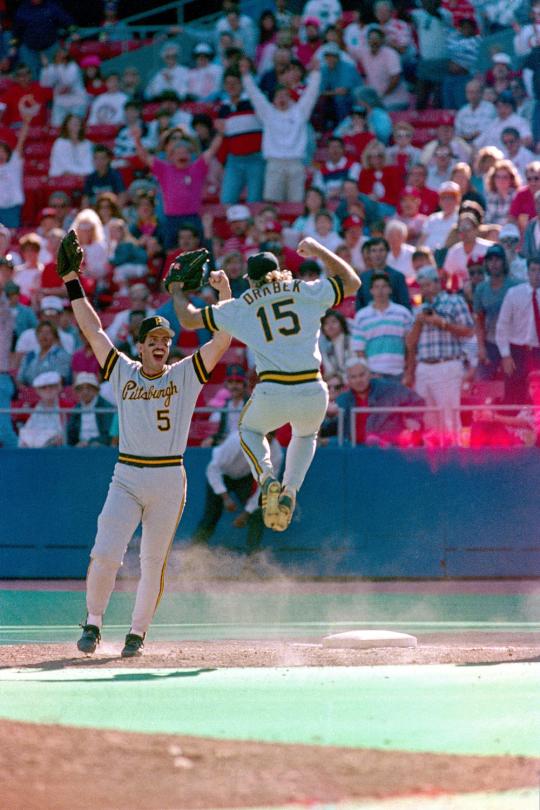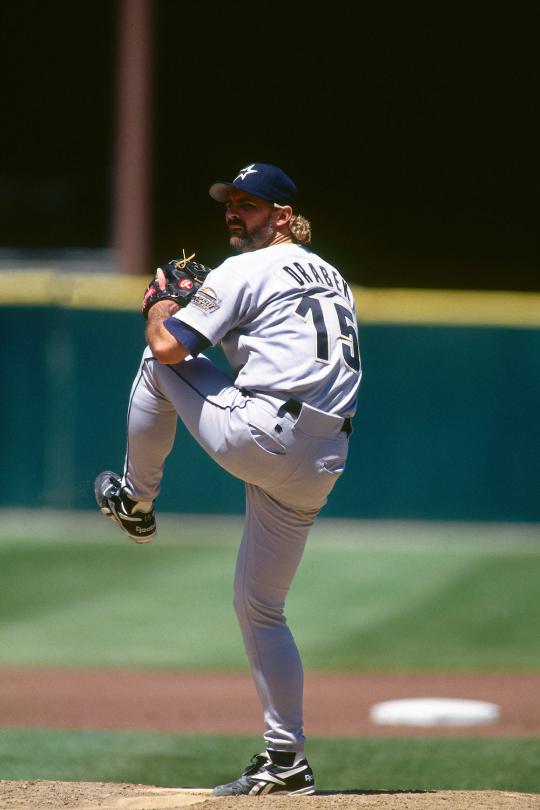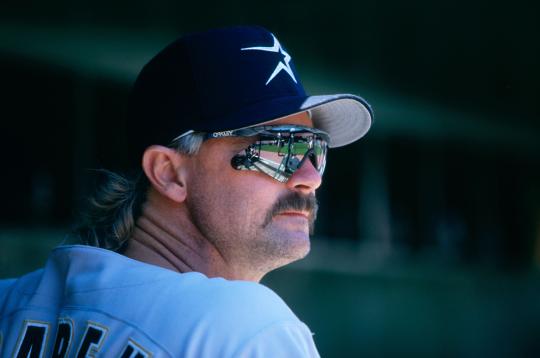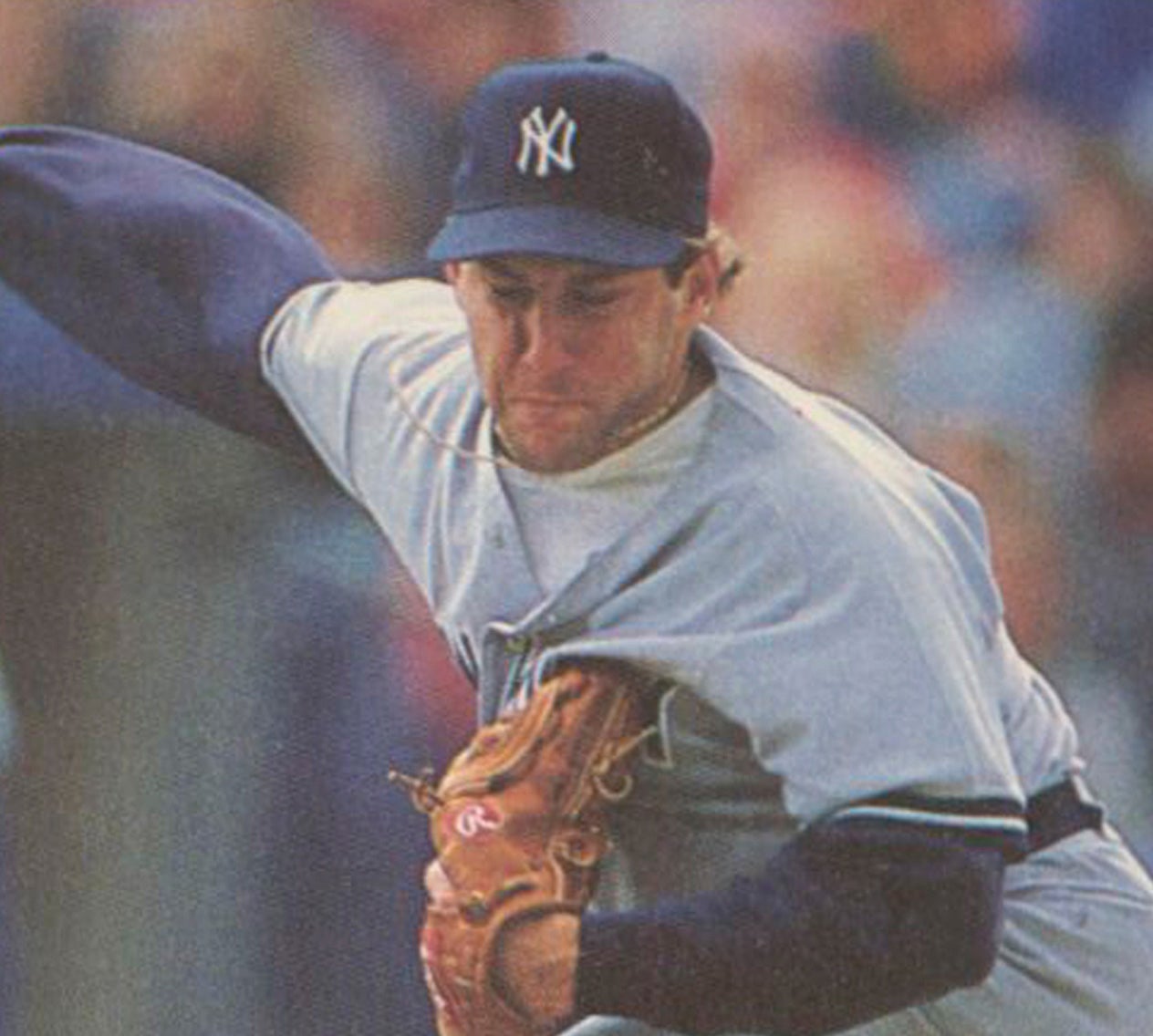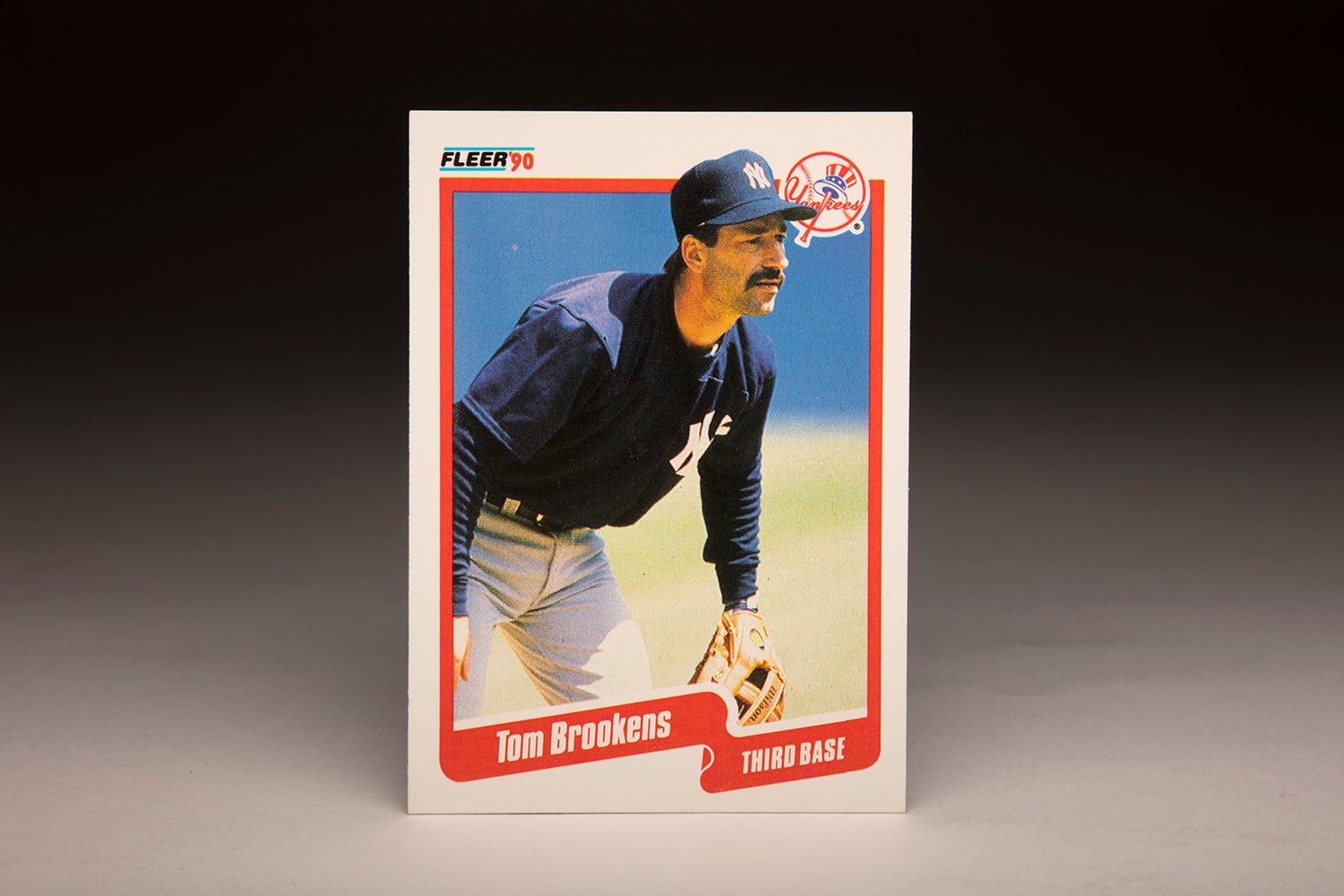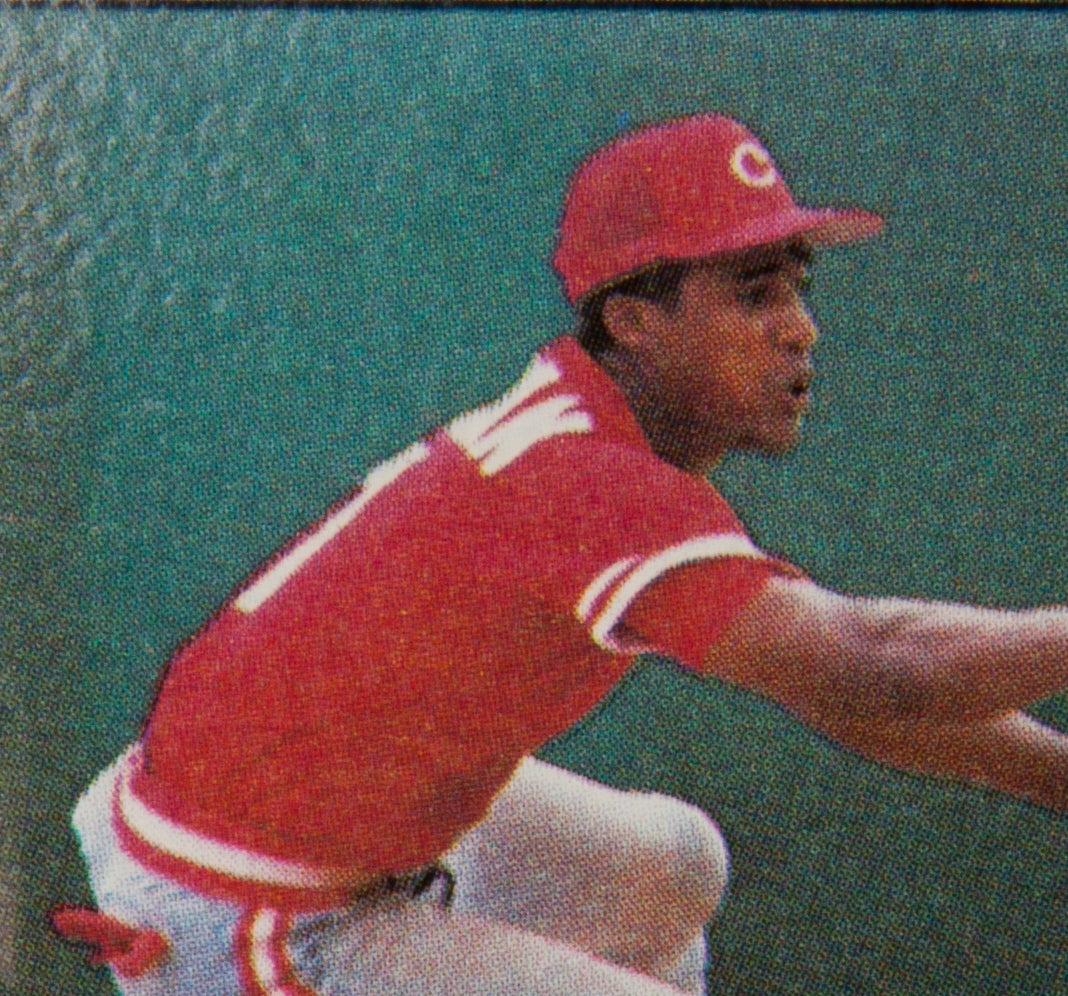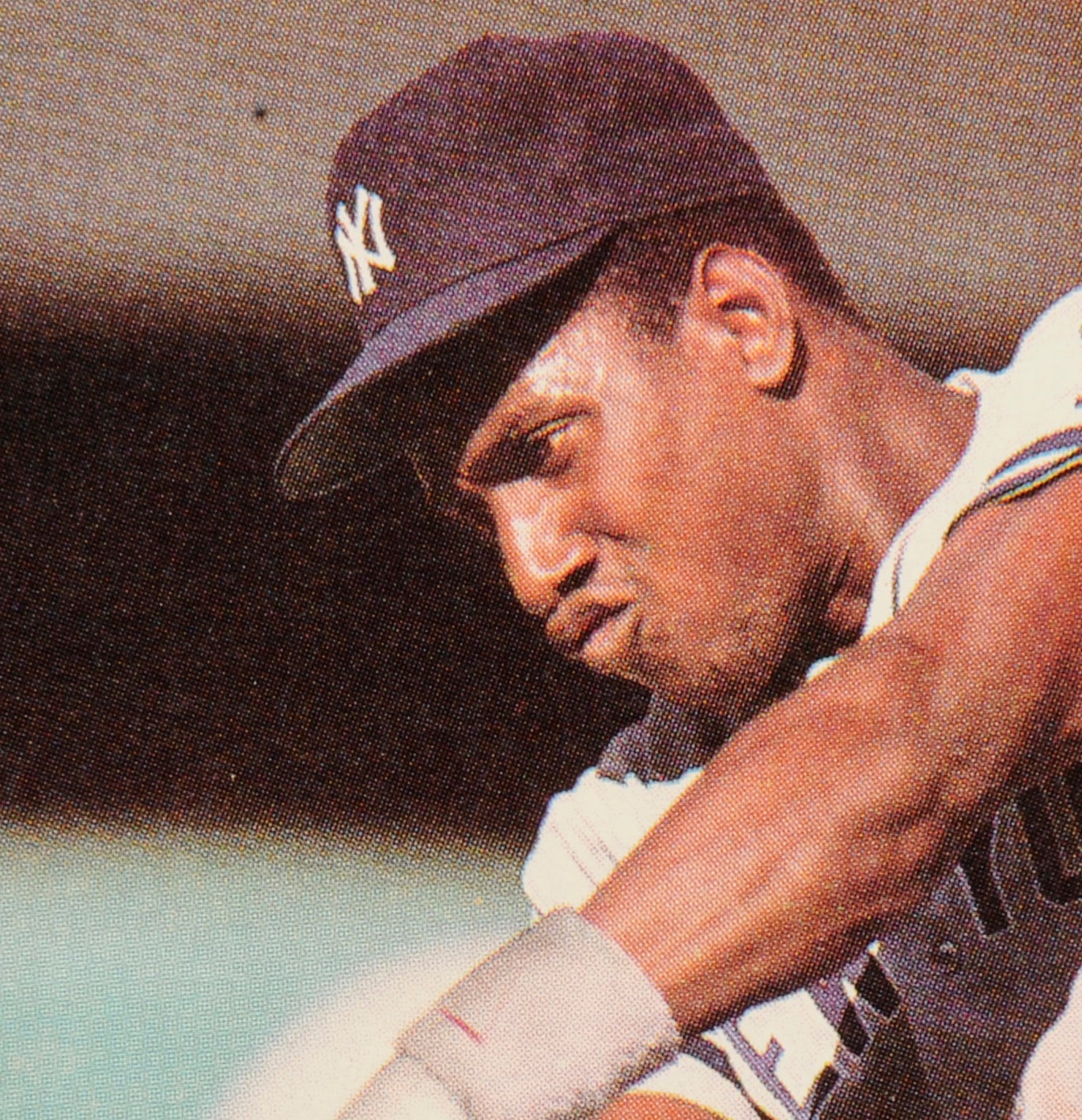- Home
- Our Stories
- #CardCorner: 1990 Topps Doug Drabek
#CardCorner: 1990 Topps Doug Drabek
From 1991 through 2002, five future Hall of Famers – Tom Glavine, Greg Maddux, John Smoltz, Pedro Martínez and Randy Johnson – won the 12 National League Cy Young Awards presented in those years.
But before that legendary run began, an unassuming right-hander from Victoria, Texas – Douglas Dean Drabek – made his case as the best pitcher in the Senior Circuit.
Hall of Fame Membership
There is no simpler, and more essential, way to demonstrate your support than to sign on as a Museum Member.
Drabek was 28 years old in 1990 when he won the NL Cy Young Award after going 22-6 for the NL East champion Pirates. Through he would never again approach that win total, Drabek remained the anchor of a Pittsburgh staff that was always seemingly pieced together by manager Jim Leyland and pitching coach Ray Miller en route to three division titles from 1990-92.
And though the Pirates never got past the NLCS in those three seasons, Drabek left his mark on history.
Drabek, born July 25, 1962, made a name for himself as a pitcher at St. Joseph’s High School in Victoria and was selected by the Indians in the fourth round of the 1980 MLB Draft. But Drabek opted to enroll at the University of Houston, and in 1983 the White Sox took him in the 11th round of the draft.
After going 6-7 with a 3.65 ERA with Niagara Falls of the New York-Penn League in 1983, the White Sox promoted Drabek to Double-A Glens Falls of the Eastern League the next season – where he was 12-5 with a 2.17 ERA on Aug. 13 when Chicago sent him to the Yankees as a player to be named later in the Roy Smalley deal. During that summer, Drabek established himself as a top prospect by compiling a stretch of 29.2 scoreless innings.
“It was kind of a shock,” Drabek told the Post-Star in Glens Falls after the trade. “I wasn’t expecting it. But it happened, so I may as well make the best of it.”
Drabek returned to the EL in 1985 with the Yankees’ Double-A outpost in Albany-Colonie, going 13-7 with a 2.99 ERA. Then in 1986, Drabek nearly won a spot on the Yankees big league roster in Spring Training, going 2-0 with an 0.60 ERA and 12 strikeouts. But with a veteran pitching staff, manager Lou Piniella chose to send Drabek to Triple-A Columbus – telling Drabek he would likely be the first pitcher called up during the season.
Drabek then proceeded to go 1-4 with a 7.29 ERA in eight starts for the Clippers. But in a surprise move, the Yankees brought Drabek to the majors on May 26, 1986, when Brian Fisher – who would cross paths with Drabek again in the future – was sent down.
“I was surprised, very surprised,” Drabek told the Hartford Courant. “I had seven bad games in a row. A lot of teams aren’t going to give you many more chances.
“I’m not going to worry about whether this is a short-term plan or a long-term plan. I’m just going to go out there and try to do the job they want me to do.”
On May 30, Drabek made his big league debut, pitching 4.1 innings – allowing one hit and one run – in relief of Joe Niekro in a 6-3 loss to the Athletics. Except for a rehab start in 1998 with the Orioles, Drabek would never again pitch in the minor leagues.
Drabek made 27 appearances for the Yankees in 1986, including 21 starts, going 7-8 with a 4.10 ERA. He won four of his last five decisions, and by season’s end was seen as a part of the Yankees’ future. But when the Pirates offered veteran starter Rick Rhoden following the season, the Yankees sent Drabek, Fisher and pitcher Logan Easley to the Pirates for Rhoden, Pat Clements and Cecilio Guante.
“When last season ended, I said our first priority was to get our pitching straightened out,” Pirates general manager Syd Thrift told the Pittsburgh Post-Gazette following the trade.
With the deal, Thrift provided the Pirates a pitcher who would become the franchise’s first Cy Young Award winner since Vern Law in 1960.
Drabek went 11-12 with a 3.88 ERA in 28 starts in 1987, then helped the Pirates post their first winning season in five years with a 15-7 mark in 1988. In 1989, Drabek was 14-12 with a 2.80 ERA in 244.1 innings, firmly establishing himself as the staff ace even though the Pirates finished a disappointing 74-88.
Then in 1990, Drabek won seven of his first nine starts as the Pirates sprinted out to a lead in the NL East. He was 9-4 with a 3.28 ERA at the All-Star Break and was left off the All-Star Game roster. But he earned a decision in all but one of his final 16 starts of the year, finishing 22-6 with a 2.76 ERA in 231.1 innings.
His three-hit shutout of the Cardinals on Sept. 30 clinched the division title for the Pirates.
The Pirates fell to the Reds in the NLCS, with Drabek taking a hard-luck 2-1 loss in Game 2 when he allowed just five hits in a complete game effort. He bounced back to win Game 5 by allowing just one earned run over 8.1 innings, but Cincinnati won Game 6 to advance to the World Series.
Drabek received 23 of 24 first-place votes in the Cy Young Award voting, easily outdistancing Ramón Martínez of the Dodgers and Frank Viola of the Mets.
“He’s basically got the Pirates where they are on his own,” Viola told the Pittsburgh Post-Gazette before the end of the season.
Drabek had little help in the rotation in 1990, as no other Pittsburgh pitcher worked more than 150 innings. But in 1991, Drabek needed help as he started the season 2-7. The slump did not slow the Pirates, however, as Pittsburgh once again took control of the NL East while Drabek righted the ship.
By the end of the year, Drabek was 15-14 with a 3.07 ERA in 234.2 innings, drawing the Game 1 start in the NLCS vs. the Braves.
Drabek worked six scoreless innings in Game 1, but strained his left hamstring trying to stretch a double into a triple in the sixth inning on a hit that gave the Pirates a four-run lead. As a result, Drabek was unavailable until Game 6, when he allowed just one run over nine innings – on a two-out, ninth-inning double by Greg Olson that scored Ron Gant – in a 1-0 loss. The next night, John Smoltz shut out the Pirates to send the Braves to the World Series.
Drabek began the 1992 season with free agency looming. With Bobby Bonilla having already left for the Mets and Barry Bonds set to become a free agent as well after the season, the Pirates viewed 1992 as their last chance to get to the World Series. Once again, Pittsburgh got off to a fast start. And even though Drabek was 3-4 at the end of May, his 2.99 ERA indicated his effectiveness.
By season’s end, Drabek was 15-11 with a 2.77 ERA and 10 complete games over 256.2 innings. The Pirates, who were 20-14 in Drabek’s 34 starts, won the NL East for the third straight season.
The Braves met the Pirates again in the NLCS and won three of the first four games, with Drabek losing Game 1 5-1 and Game 4 6-4. But the Pirates rallied for wins in Game 5 and 6, forcing a Game 7 with Drabek on the mound. He blanked the Braves through eight innings, but a double, an error and a walk loaded the bases with none out in the ninth and forced Drabek from the game.
Stan Belinda entered and got Ron Gant on a sacrifice fly to cut the lead to 1, then walked Damon Berryhill to reload the bases. A Brian Hunter pop out left it all up to pinch hitter Francisco Cabrera, who lined a Belinda offering into left field to score Justice and Bream and tag Drabek with a heartbreaking loss.
Forty-eight days later, Drabek signed a four-year, $19.5 million contract with the Astros – returning home to Houston. It was one of the largest contracts ever signed by a pitcher.
“He’s leaving a big part of himself behind in Pittsburgh,” Drabek’s agent Randy Hendricks told the AP.
Drabek struggled in his new surroundings in 1993, going 9-18 with a 3.79 ERA in 34 starts. But he returned to form in 1994, posting a 12-6 mark and 2.84 ERA in that strike-shortened season, finishing fourth in the NL Cy Young voting and earning his first All-Star Game selection.
But the toll of 237 innings per season from 1988-93 began to show in 1995 when Drabek went 10-9 with a 4.77 ERA in 31 starts. He was 7-9 with a 4.57 ERA in 1996 over 30 starts, then signed a one-year free agent contract with the White Sox.
“Obviously, my numbers last year and the year before haven’t been great,” Drabek told the AP. “I’ve got to get a couple things together where I can get my consistency back and help out a lot more than I have.”
But years of throwing his devastating sinker – a pitch that helped him induce thousands of ground ball outs – had done too much damage to his right arm. Drabek was 12-11 with a 5.74 ERA in 31 starts in 1997 before signing with the Orioles, where he was 6-11 in his final big league season in 1998.
Drabek retired in early 1999, quickly signing on as a coach of the Little League team that featured sons Justin and Kyle. A little more than 11 years later, Kyle Drabek would debut in the big leagues for the Toronto Blue Jays.
In 12 big league seasons, Kyle’s father was 154-134 with a 3.74 ERA.
“I was happy I got to play that long,” Drabek told the Victoria Advocate. “I know everybody wants to play for as long as they can. But there’s a limit for everybody’s body. You have to realize when that time is.”
For Doug Drabek, his time came after some of the game’s biggest moments of the 1990s.
Craig Muder is the director of communications for the National Baseball Hall of Fame and Museum

